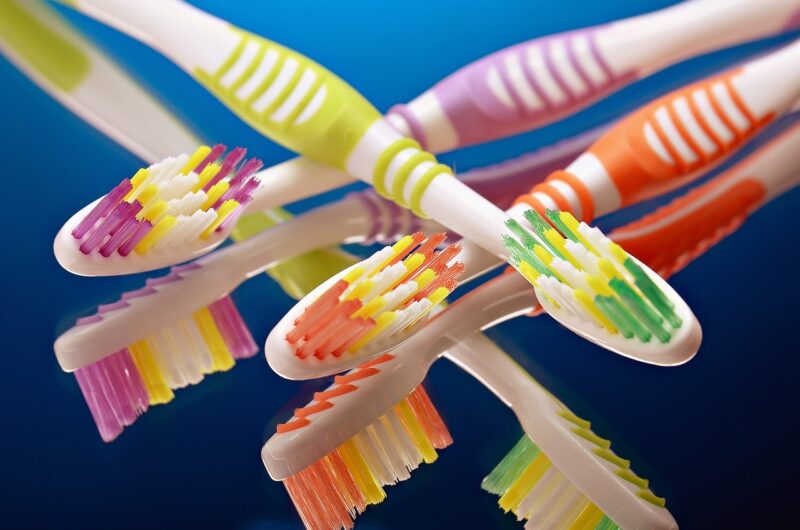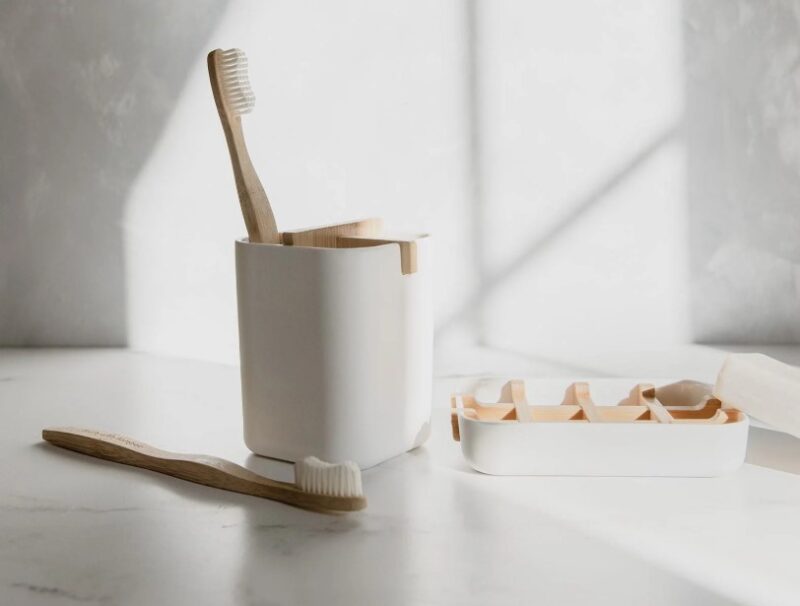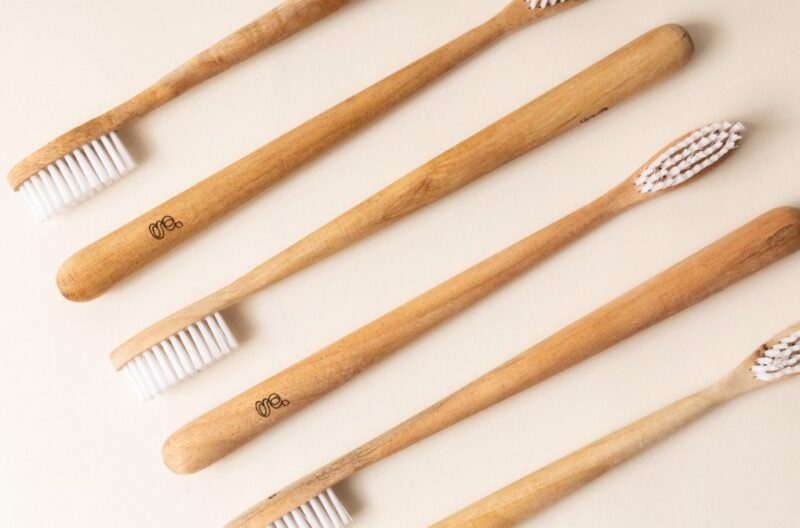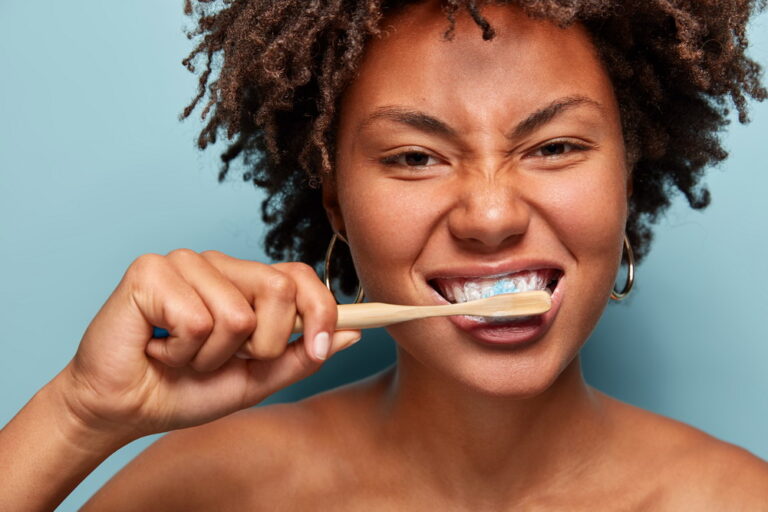Toothbrushes are essential for maintaining oral health, yet their impact on the environment often goes unnoticed. Every year, billions of plastic toothbrushes end up in landfills and oceans, where they take centuries to break down, contributing to long-term pollution.
Plastic also sheds tiny toxin-harboring particles during use. Nevertheless, according to the folk at Ecofam, new compostable toothbrushes avoid plastic entirely with innovative materials and designs. These eco-friendly models improve oral health through safer components and better plaque removal.
People are increasingly aware of how their daily habits affect their health and the environment, which is leading to a surge in demand for eco-friendly oral care products. As we learn more about microplastics and their harm to human health, the necessity of alternative materials becomes increasingly clear.
Key Points
- Plastic toothbrushes contribute to landfill waste and release harmful particles.
- Traditional handles contain toxins that can irritate gums.
- Compostable toothbrushes provide safer, eco-friendly alternatives.
- Materials like bamboo, wood, and bio-plastics offer durability and hygiene benefits.
- Using a plastic-free toothbrush promotes better brushing habits.
- Choosing the right compostable toothbrush ensures maximum health and sustainability benefits.
Problems with Plastic Toothbrushes
Billions of plastic toothbrushes meet trash bins annually. Few facilities actually recycle these used personal care items. So most linger in landfills for centuries without decomposing. The plastic also poses problems during use including:
- Toxic chemicals – Manufacturing handles with PVC plastic requires vinyl chloride and phthalates that irritate gums.
- Bacteria buildup – Jagged handles harbor germs in crevices hard to sanitize fully.
- Wear and tear – Thin plastic splinters with brittle bristles that hurt gums over time.
- Environmental impact – Every phase of a plastic brush’s lifecycle harms ecosystems from production plants to oceans.
Even premium brands fail to address the underlying materials issues. Plastic handles come with too many inherent flaws for oral health and environmental wellness.

Plastic-Free Toothbrush Benefits
The sustainable alternative is compostable toothbrushes made of plastic-free materials. Common materials include:
- Bamboo – Naturally antimicrobial and sustainably harvested wood
- Wood – Renewable sources like maple, beech and oak
- Bio-plastic – Plant-based resins from corn, potatoes or other starch crops
- Rubber – Eco-friendly thermosets and rubberwood derivatives
These renewable resources offer health advantages over regular plastic:
- Non-toxic – No chemicals or artificial additives leaching near the mouth
- Cleaner – Smooth non-porous handles discourage bacteria growth
- Durable – Stronger construction resists cracking or splintering
- Eco-friendly – Fully biodegradable or recyclable parts
The right materials also enable better plaque removal. Bamboo’s resilience supports firmer bristles to wipe away more buildup and stains without irritating gums.
Maximizing Oral Health Benefits
While compostable in theory, most eco brushes still belong in the trash because of residual paste and contaminants picked up during use. But solely changing the foundation material makes a meaningful sustainability difference over hundreds of uses. In addition, non-plastic handles promote better brushing habits for cleaner teeth and healthier gums:
- Hold the brush at a slight angle to the gumline.
- Use gentle circular motions to sweep plaque from gum edges.
- Brush for two full minutes, quadrants at a time.
- Replace bristles every 2-3 months from wear.
- Upgrade to a new compostable handle after 6-9 months.
Refreshing both key parts ensures full cleaning power while saving tons of plastic entering the environment over years of daily use.
What to Look for When Buying

As consumer demand for eco-products grows, the options may seem dizzying. Look for these hallmarks of quality compostable toothbrushes:
- Plastic-free assurance – Clear “zero plastic” confirmation on packaging.
- Thorough test results – Published bacteria, durability, and stain removal findings.
- Certified grades – Documentation of specific material sources.
- Established reputations – Years of consistent compostable product offerings.
- Money-back guarantees – Ensures performance promises.
Top plastic-free brands check all the boxes. The small upfront premium brings multiplied dividends for teeth, gums, smiles, and environmental welfare over the long run.
Making the Switch ─ Steps to Follow
Switching to a plastic-free toothbrush is a simple yet impactful decision. Here are a few steps to ensure a smooth transition:
- Choose the right material – Select a handle made of bamboo, wood, or another sustainable option.
- Check bristle composition – Some eco-friendly toothbrushes still contain nylon bristles, so opt for plant-based alternatives if possible.
- Store it properly – Keep the toothbrush dry to prevent mold and extend its lifespan.
- Dispose of it correctly – Separate bristles from handles for proper composting or recycling.
- Educate your household – Encourage family members to switch for collective environmental benefits.
These steps make the transition seamless while maximizing sustainability efforts.
Comparing Plastic vs. Compostable Toothbrushes
A simple comparison highlights why compostable toothbrushes are the superior choice.
|
Feature |
Plastic Toothbrush |
Compostable Toothbrush |
| Material | Petroleum-based plastic | Bamboo, wood, or bio-plastics |
| Durability | Prone to splintering | Stronger and more resistant |
| Toxicity | Contains phthalates and PVC | Free of harmful chemicals |
| Bacteria Growth | Harbors bacteria in crevices | Naturally antimicrobial |
| Environmental Impact | Ends up in landfills | Biodegradable or compostable |
The benefits of switching to compostable toothbrushes far outweigh the minor inconvenience of adjusting to new materials.
Are All Compostable Toothbrushes the Same?

Are all compostable toothbrushes truly the same? Many people assume that any eco-friendly toothbrush is a step toward sustainability, but that is not always the case. Some brands market their products as compostable while still using mixed materials that contain plastic, making them far less environmentally friendly than they claim.
Before choosing one, pay close attention to key details. Labels that claim to be 100% plastic-free should not be taken at face value without verification. Some companies use misleading marketing, so it is essential to confirm the materials used. Bristle composition also matters—many toothbrushes still rely on nylon, which does not break down naturally. Opt for plant-based bristles to ensure a fully compostable product.
Certifications from reputable third-party organizations provide another layer of assurance. A brand that holds sustainability approvals is more likely to offer a genuinely eco-friendly option. Reading user reviews and selecting well-established brands can also help avoid greenwashing.
Taking a moment to research these factors ensures that your choice aligns with true sustainability, rather than just the illusion of it.
Conclusion
Plastic toothbrushes pile up as toxins in landfills while harboring germs and bacteria during use at great hidden expense. But new compostable alternatives boost oral health using safer, cleaner materials that also avoid environmental harm after disposal. Your mouth and the planet both benefit greatly from such simple proactive choices rooted in innovation and sustainability. Consider making an easy switch today for all-around gains.

